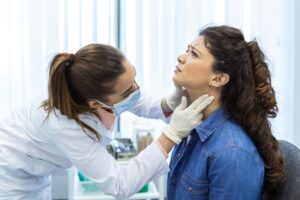
Melasma also called Chloasma is a problem that occurs commonly in the skin in pregnant women. The disease also called ‘mask of pregnancy’ causes discolored and dark patches on the facial skin. Though men can get the disease, the condition occurs commonly in women.
Causes of Melasma are not very clear. Individuals with fair skin have more risk of Melasma as compared to individuals with darker skin. Progesterone and estrogen sensitivity are associated with this disease which means that pregnancy, hormone therapy and pills for birth control can trigger Melasma. Thyroid disease and stress are also postulated to be causes of Melasma. Pigment is controlled by pigment cells and when ultraviolet rays affect the cells it could cause Melasma.
Symptoms of Melasma include discoloration and dark patches on the facial skin. Symmetrical patches or marks occur on both sides of the face. Melasma can also occur on other body areas with exposure to sun. Patches in brownish color appear usually on the chin, cheeks, bridge of the nose, forehead and also on the forearms and neck at times. No physical harm is caused by the patches however the person feels self conscious about his or her appearance with the patch marks.
A doctor or dermatologist must be contacted if these symptoms are noticed. A dermatologist is a specialist in treating disorders of the skin.
Diagnosis of the disease is done by examining the affected area, visually. Some tests are also performed to rule out specific causes. Wood’s lamp examination is one technique for testing. A light of special kind is held up on the skin and the doctor checks out infections and determines the number of skin layers affected by Melasma. A biopsy might be performed to check out any skin conditions that may be serious. A small skin piece many be removed for testing purposes.
Melasma may disappear on its own in most women who take birth control pills or are pregnant. To lighten up the skin or affected area, creams and topical steroids are subscribed by the doctor. Other possible options are Microdermabrasion, dermabrasion and chemical peels, just in case other treatments don’t work. Top skin layers get stripped away and in the process helps in lightening dark patches. Follow up visits may be needed if patches do not get lightened completed and also to reduce risk of the disease returning. Wearing sunscreen and minimizing exposure to skin are best ways to reduce Melasma risk.
Living and coping with Melasma is not difficult. Appearance of discoloration can be best minimized by using hat with wide brim to provide shade and shield the face, using prescription medication, wearing makeup to cover patches properly and wearing SPF 30 sun screen regularly. For people spending extended time periods in the sun, wearing proper protective clothing is essential.








